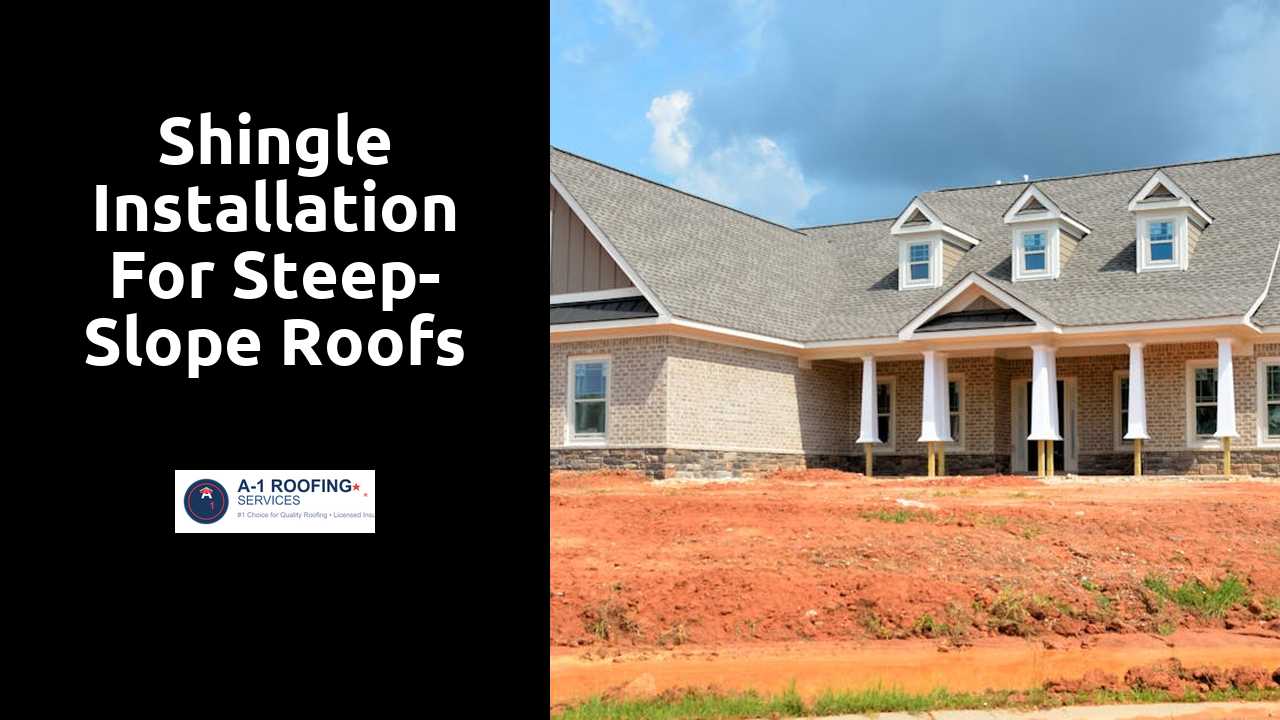
Shingle Installation for Steep-Slope Roofs
Table Of Contents
Common Mistakes to Avoid
Proper alignment of shingles is crucial for achieving a weather-tight and aesthetically pleasing roof. Many installers neglect this critical step, which can lead to water pooling and potential leaks. An improper alignment can also create an uneven look that may detract from the overall appearance of the home. It’s essential to start at the eave and work gradually up the slope, ensuring that each shingle overlaps adequately with the previous one to provide maximum protection against the elements.
Another common oversight involves the sealing of shingles. Skipping the application of adhesive sealants or not allowing sufficient time for the sealant to cure can result in loose shingles that are vulnerable to wind uplift. Many installers rush this part of the process, thinking that they can save time. This can lead to expensive repairs in the future. Taking the necessary time to follow proper sealing techniques ensures durability and longevity for the roof.
Continue to read this blog post for more great tips.
Ensuring Proper Alignment and Sealing
Achieving precise alignment during shingle installation is crucial for maximizing both aesthetics and performance. Each shingle must be set in a straight row, ensuring that they overlap correctly to channel water off the roof. Misalignment can lead to unsightly gaps and can compromise the roof's ability to protect against leaks. Attention to detail at this stage can prevent more significant issues down the line, including the need for repairs or complete reinstallation.
Proper sealing is equally important to reinforce the integrity of the roof. Shingles should be adequately sealed using adhesive or sealants specified for the material type. This step protects against wind uplift and prevents water infiltration during heavy rains. It is essential to follow manufacturer guidelines for the specific type of shingles being used, as improper sealing can lead to premature wear and decreased lifespan of the roofing system. The time invested in ensuring both alignment and sealing will pay off in enhanced durability and performance of the roof.
Maintenance Tips for Steep-Slope Roofs
Regular inspections of steep-slope roofs play a crucial role in prolonging their lifespan. Homeowners should assess their roofs at least twice a year, ideally in the spring and fall. This practice allows for the detection of early signs of wear, like loose shingles or damaged flashing. It is also essential to pay close attention after severe weather events, as heavy rains or winds can exacerbate existing issues. Any necessary repairs should be addressed promptly to prevent further damage from occurring.
Routine maintenance tasks also include cleaning gutters and downspouts to ensure proper drainage. Clogged gutters can lead to water backing up and damaging roofing materials. Additionally, removing debris such as leaves and branches prevents moisture retention on the roof surface. Inspecting the attic for signs of leaks or water stains can provide insights into potential problems on the roof. Regular maintenance helps maintain the integrity of steep-slope roofs and contributes to overall home safety.
Regular Inspections and Repairs
Routine inspections play a critical role in the long-term health of steep-slope roofs. These inspections should be conducted at regular intervals, ideally twice a year, to identify potential issues before they escalate. A thorough examination involves checking for missing or damaged shingles, assessing the integrity of flashing, and ensuring that gutters and downspouts are free of debris. Early detection of problems such as leaks or structural weaknesses can save homeowners significant time and money.
Timely repairs are equally important to maintain the roof's overall integrity. Addressing minor issues promptly prevents them from developing into more severe problems that could jeopardize the home's interior. Homeowners should document any repairs made, keeping a record of the timeline and specifics. This practice not only helps in tracking the roof's condition but also aids in planning future maintenance efforts and understanding warranty requirements.
Weather Considerations
When planning shingle installation for steep-slope roofs, it's crucial to consider the local weather conditions. Rain, snow, and extreme temperatures can significantly impact the installation process. It's best to avoid working in wet or icy conditions, as moisture can interfere with the adhesive properties of roofing materials. Additionally, high winds can pose safety risks for workers and can lead to improper placement of shingles.
Optimal installation typically occurs during mild weather months, where temperatures are moderate, and precipitation is low. Installing shingles in such conditions allows for the materials to adhere properly and ensures longevity. Monitoring weather forecasts closely prior to scheduling work can help avoid delays and complications that arise from unexpected weather changes.
Optimal Conditions for Installation
Choosing the right time for shingle installation is critical to ensure long-lasting results. Ideally, the temperature should be between 50°F and 85°F for optimal adhesion. Installing shingles during cooler weather can cause them to become brittle and increase the likelihood of breakage. Likewise, excessive heat may affect the sealant's effectiveness, preventing proper bonding. Wind conditions also play a vital role; calm days are preferable to minimize displacement and ensure accuracy.
Moisture is another factor to consider before beginning installation. Rain, dew, or high humidity can compromise the adhesion of shingles, leading to potential leaks down the line. It is advisable to wait for a few dry days to allow surfaces to fully dry out before installation. Furthermore, ensuring that the roof deck is clean and free from debris will facilitate better sealing and overall performance of the shingles. Planning around these factors can greatly enhance the success of your roofing project.
Related Links
How Weather Conditions Affect Shingle InstallationBest Practices for Installing Asphalt Shingles